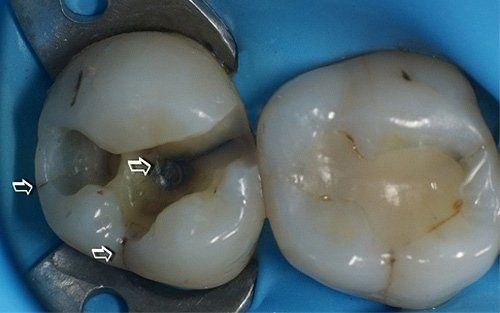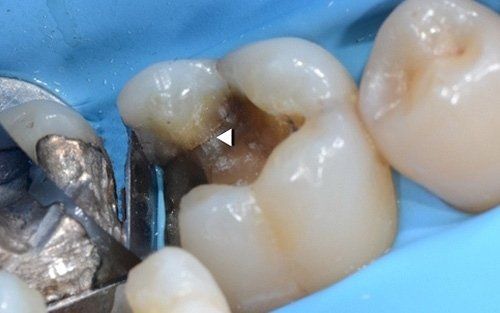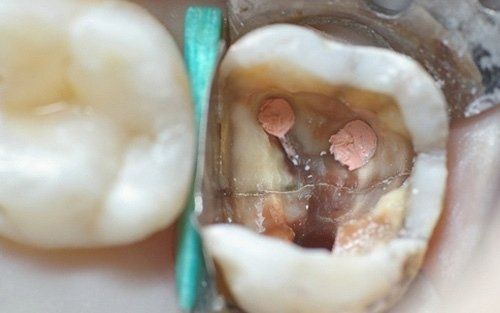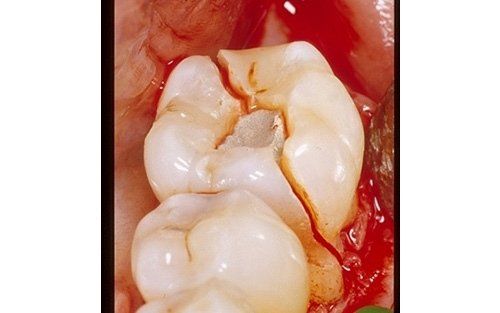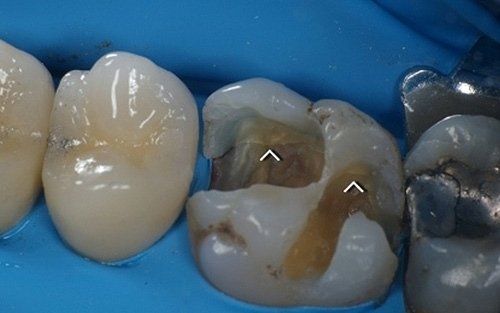CRACKED TOOTH SYNDROME
One of the complications we commonly encounter today in our clinics is the so-called
"cracked tooth syndrome".
It often manifests with pain during chewing in a tooth that has a large restoration, usually an amalgam. Increased sensitivity, especially to cold, is also frequently present in a tooth that was previously asymptomatic. A thorough clinical examination and understanding of the symptoms reported by the patient are crucial. Radiographic examinations are generally not helpful in this syndrome, and only the accuracy of evaluations performed in the chair (thermal tests, bite tests, percussion) will allow for a diagnosis.
Upon removal of the old restoration, the diagnosis will be confirmed by visualising fracture lines that may involve various areas of the tooth (usually the base of one or more cusps, extending to the entire roof of the pulp chamber and root extension). Not all cracks are equally severe: we believe that preserving the vitality of the pulp, where possible, along with protecting the affected cusps from cracking, is the most conservative and long-term effective therapy for tooth health. In the "Direct restorative dentistry" section and especially in the "Indirect restorative dentistry" section, you will find a series of restorative solutions for the cracked tooth.
Vertical root fracture, on the other hand, is one of the few conditions that leave no doubt about treatment: once diagnosed, extraction is the only possible treatment. This type of fracture should not be confused with other types of root fractures, such as post-traumatic ones, which, on the contrary, have a high success rate. Vertical fracture, however, is a fracture line, often starting from a coronal fissure (as described above), creating a continuity solution between the intra- and extra-radicular environments, that is, communication between these two environments, creating the conditions for an infection.
The root is no longer protected, and inflammatory-infectious processes that cannot be cured set in. Patients usually do not report severe pain but discomfort they did not experience before. This condition is one of the main reasons for replacing a single tooth with a dental implant. Sometimes immediate implant placement, i.e., implants inserted simultaneously with tooth extraction, may also be possible. Consult the "Implantology" section to assess treatment options in such cases.



